How to See Iceland’s Golden Circle in Winter (Without a Car)
Visiting Iceland’s Golden Circle in winter is one of those bucket-list experiences that sounds completely magical… Right?
That is, until you start worrying about how on earth you’re meant to get there with roads covered in snow and ice!
Because yep, I totally get it. The idea of navigating snowy and icy roads alone as a solo traveller is mildly terrifying and definitely not for everyone.
But the good news is that you don’t need a car to experience the highlights of Iceland’s most iconic route in winter!
I’m Katie, an experienced solo female traveller, and I visited Iceland’s Golden Circle in January – without a car.
I’ve done the tours, I’ve seen that iconic waterfall, and I’ve learned what actually works when you want to experience the prettiest places in Iceland, without worrying about black ice or snowstorms!
So if you’re dreaming of watching the Strokkur geyser erupt through the snow, walking between continents at Thingvellir National Park, or relaxing in a steamy hot spring – you’re in the right place!
This is your step-by-step guide to seeing Iceland’s Golden Circle in winter without a car, safely and easily, while still having the experience of a lifetime!
Disclaimer: Some of the links on this blog are affiliate links. That means if you click on one and make a purchase, I may earn a small commission – at no extra cost to you. I only recommend products, places and services I genuinely love and use on my own solo travels. Thank you for supporting my adventures so I can continue to provide free content on this blog! 💛
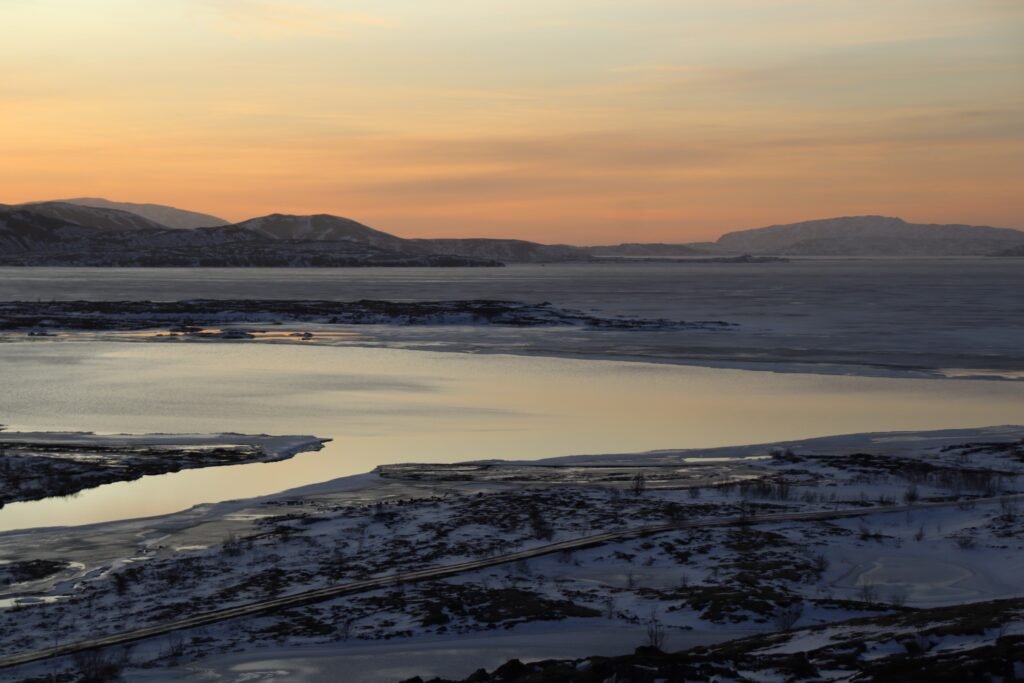
Where Is the Golden Circle?
Before I visited Iceland for the first time, “the Golden Circle” sounded like some mythical land from a storybook rather than a real place, so let’s start with the basics.
The Golden Circle is a scenic (and Iceland’s most famous) sightseeing route in southwest Iceland that covers roughly 300km (or about 186 miles) round-trip from Reykjavik.
It links three of Iceland’s most famous attractions:
- Thingvellir National Park
- The Geyser geothermal area
- Gullfoss waterfall
And because it’s so close to the capital, this is usually the first day trip from Reykjavik most tourists pick.
But even though it’s definitely the most popular route, it doesn’t feel like a tourist trap (at least not in winter when it’s quieter).
Snow covers the lava fields, the eruptions from geysers take your breath away, and a frozen waterfall crashes into a deep canyon.
It’s dramatic, raw, wild, and totally stunning!
Katie’s Top Tip: Reykjavik is your best base. You can visit the Golden Circle in winter easily via a guided tour that picks you up right from your accommodation or from central meeting points around Downtown.
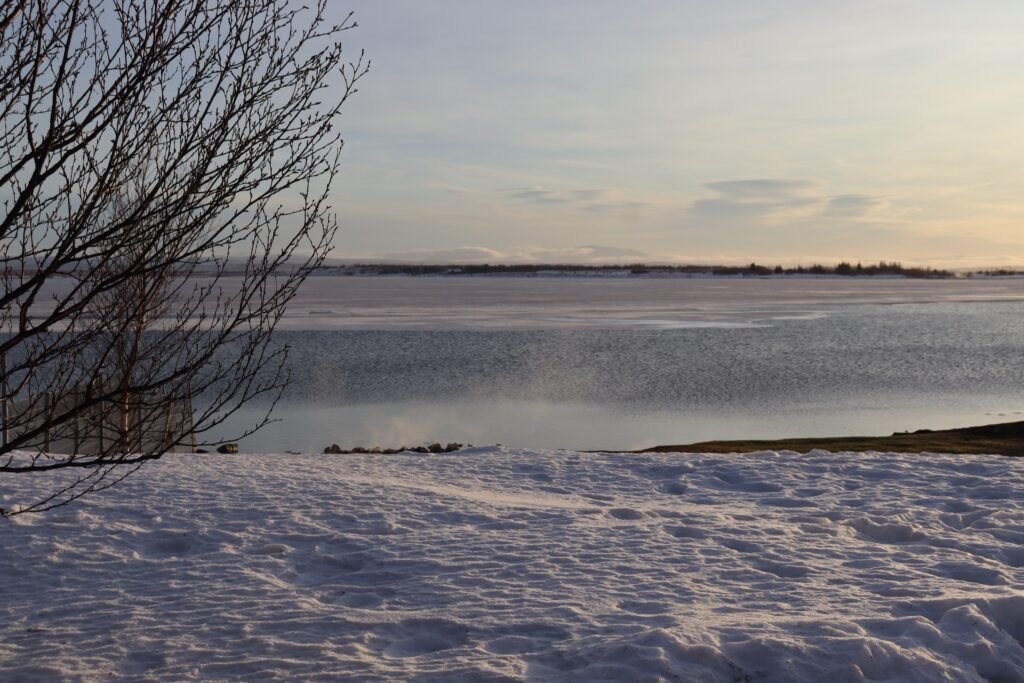
Is the Golden Circle Worth Visiting in Winter?
Yes, absolutely! And in my honest opinion, I think the Golden Circle is more worth visiting in winter than in summer.
(Yep, I know that’s controversial. I’ll explain!)
There’s something so special and almost magical about visiting the Golden Circle in winter.
The tourist crowds massively thin out, the light stays low and golden all day, and those spots you see heaving with people in the summer feel quiet and untouched, blanketed with snow.
Yes, it’s colder, windier, and the days are very short, but I think that’s what makes it so special.
And the Golden Circle is also truly beautiful at this time of year.
Gullfoss Waterfall partially freezes into layers of ice that crash into the deep canyon below.
The Strokkur geyser erupts through the snow and ice, with the steam even more prominent, mingling with the cold air.
And Thingvellir National Park turns into a true winter wonderland, covered in snow as you look out across the tectonic plates of two continents.
So if you’re the kind of traveller who dreams of experiencing Iceland at its quietest, most authentic time of year (like me!), this is 100% your season.
Katie’s Top Tip: Don’t be put off by the cold. The tours run safely all year round, and tour operators are very experienced and monitor road conditions closely. Dress for the weather (base layers, waterproof outerwear, sturdy boots, gloves…) and you’ll be just fine!
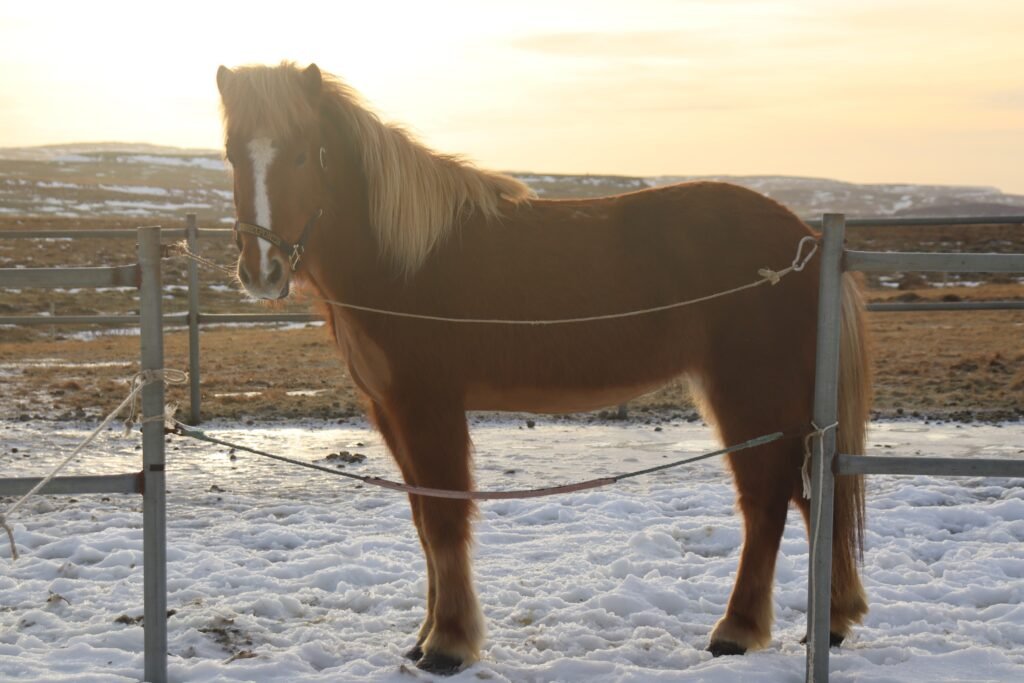
Golden Circle Winter Weather: What to Expect
Now let’s talk about Golden Circle winter weather, because honestly, Iceland’s climate in winter has a mind of its own!
During Iceland’s winter (between November and March), temperatures in the Golden Circle average between -1°C and 4°C.
So it’s not too cold when compared to other countries, for example, Northern Norway (I experienced -18°C in Kirkenes!)
But the real challenge is the wind, which often makes the “feels-like” temperature much, much colder.
Plus, the weather changes fast in Iceland, sometimes without warning.
During my trip in January, I saw the weather go from calm sunshine and no wind to sideways snow and a mini gale in the space of 1 hour!
It’s not all doom and gloom in terms of weather, though.
The payoff is the light. Those short winter days (just 4–6 hours of daylight in midwinter) are a photographer’s dream! The sun sits low on the horizon, casting the scenery in a soft glow.
And at night? You might just catch the Northern Lights!
Katie’s Top Tip: Download the app SafeTravel Iceland before your trip. It gives real-time weather, road and travel alerts. And even if you’re on a tour, it’s a great way to stay informed.
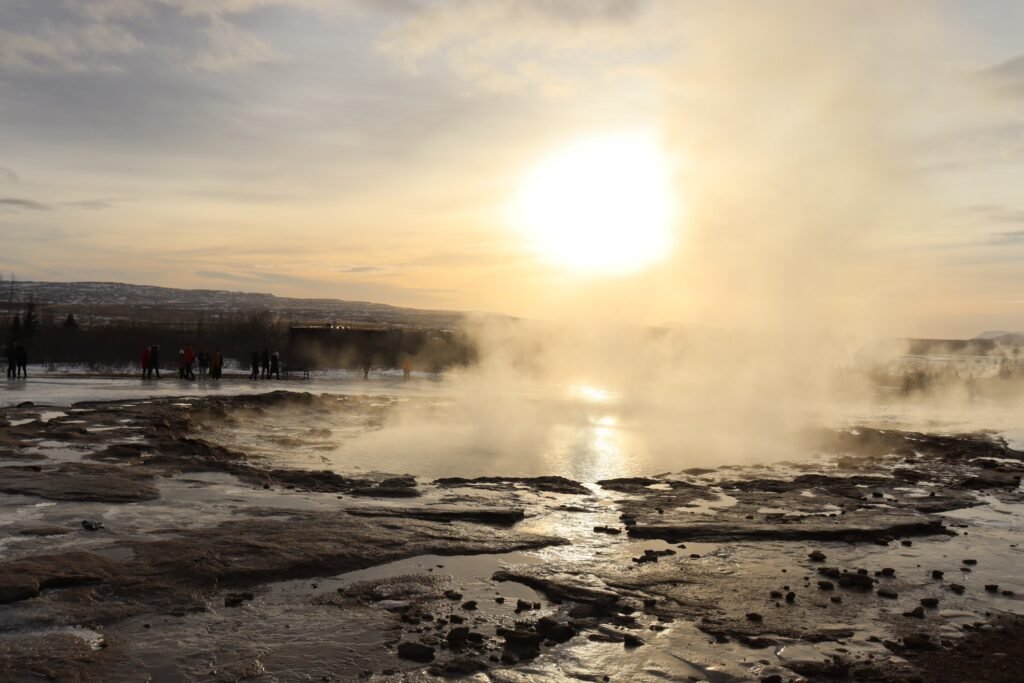
How to See the Golden Circle Without a Car
The good news is that you don’t need to drive yourself to see the Golden Circle in winter.
In fact, I’d actually recommend not driving, unless you’re used to and confident in extreme winter conditions (icy roads, snowstorms, strong winds, whiteouts…)
Instead of driving, I recommend joining a small-group tour from Reykjavik to all of the key Golden Circle stops (and often some bonus stops along the way!)
In my experience, joining a tour makes the day so much more relaxed (you can actually admire the scenery on the drive, rather than focusing on the road!), and also more social, if that’s your thing.
Plus, local guides share fascinating stories and tips along the way that you’d miss if you went alone!
Katie’s Top Tip: Don’t book the cheapest tour you find (I’ve made this mistake so many times!) Instead, read recent reviews (don’t just look at the star rating), and check for small-group options (under 20 people). They’re almost always more relaxed and better organised!

Best Golden Circle Tours in Winter
When it comes to Golden Circle tours in winter, there’s a huge (and honestly, overwhelming!) number to choose from, and some are definitely much better for solo travellers than others.
I personally took this Golden Circle, Crater & Blue Lagoon Minibus Tour with BusTravel Iceland, and I had such an amazing time!
It’s a full-day adventure that covers all the main stops of the Golden Circle (Thingvellir, Strokkur, Gullfoss, Kerid Crater), plus a relaxing soak in the Blue Lagoon at the end – the perfect way to relax after a long, cold day of sightseeing!
I always felt safe with our experienced driver, and our guide told us some fascinating local stories (and made us laugh too!)
It was also very well-paced and timed, so even though we packed in a lot, I never felt rushed.
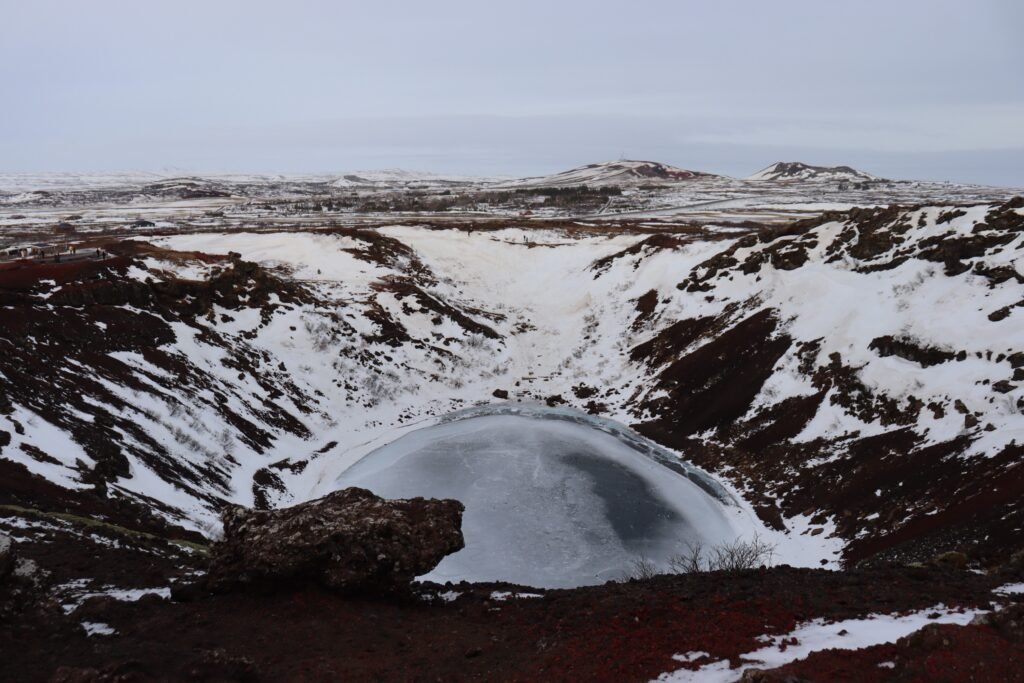
But if you’d rather save the Blue Lagoon for another day (or you’re on a tighter budget), there are great alternatives too:
Classic Golden Circle Day Tour
If you prefer a shorter day focused just on nature and photography, this classic route skips the Blue Lagoon and focuses more on sightseeing, taking in Thingvellir National Park, Gullfoss Falls, Strokkur geyser and Kerid Crater.
The guides are super engaging, and the group is small, so you’ll still get that more personal experience!
Golden Circle & Secret Lagoon Tour
This Golden Circle combo tour swaps the famous Blue Lagoon for the Secret Lagoon, which is a smaller hot spring in Flúðir village. It’s way less crowded and cheaper too!
Katie’s Top Tip: Whichever tour you choose, bring snacks! Shops along the Golden Circle route cater for tourists and so are notoriously expensive. Plus, you want less time shopping, more time sightseeing, right?! So make sure you bring everything you need for the day!

Best Things to do in the Golden Circle in Winter
1. Thingvellir National Park
Thingvellir (Þingvellir) National Park is a UNESCO World Heritage Site in Iceland that sits on the rift between the North American and Eurasian tectonic plates.
Yes, that really does mean you can literally walk between two continents.
And yes, that is as cool and other-worldly as it sounds, especially in winter!
Thingvellir is also where Iceland’s first parliament met back in 930 AD, making it one of the most historically significant spots in the country.

Plus, visiting the Golden Circle in winter means you’ll see Thingvellir blanketed in snow, with that beautiful, misty light that makes it feel even more magical.
As a solo female traveller, I really appreciated the moments of stillness at Thingvellir, especially as I made hands-down my favourite memory from my entire Iceland trip – watching a glorious sunrise over the tectonic plates at 10am!
On our tour, we visited in the morning, which felt a lot quieter, so there weren’t too many other tourists around to share the moment.
I especially loved standing at the Almannagjá fault line and feeling tiny in the best possible way!
Katie’s Top Tip: Just an FYI, the park’s visitor centre cafe does a surprisingly good hot chocolate if you need to thaw out after your walk!
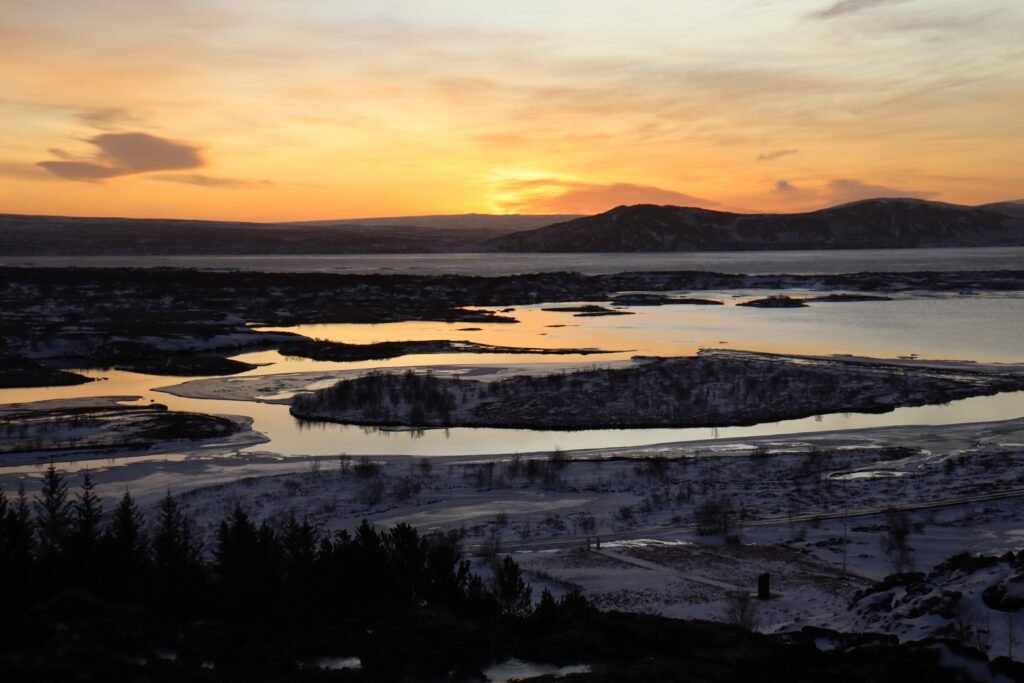
2. Strokkur Geyser
The Strokkur Geyser is Iceland’s most reliable Geyser, erupting every 5–10 minutes and sending jets of steam and water up to 20–30 metres in the air!
It’s part of the larger geothermal field at Haukadalur, where bubbling mud pots and steam vents remind you just how geothermally active and powerful Iceland is.
Watching Strokkur erupt against a snowy backdrop is unforgettable, and the way the steam mingles with the cold and catches the winter light is pure magic!
I stood there for almost half an hour watching eruption after eruption, as each one is slightly different but equally incredible to see.
Katie’s Top Tip: Please don’t stand too close for the perfect photo. You’ll still get a great view (and stay safe!) keeping your distance. Also bring a microfibre cloth for your camera or phone lens, as tech fogs up near the steam.

3. The Geothermal Area
Aside from Strokkur, the wider geothermal area of the Golden Circle in Iceland is full of steaming vents, mineral deposits, and that signature sulphur smell!
In particular, in winter, the rising geothermal steam against the snow looks incredible.
If you’re visiting the Golden Circle with a tour, your guide will take you to a few different spots where you can get close to the steaming vents and see Iceland’s true power up close!
It’s by far one of the most surreal travel experiences I’ve ever had, pulling off into a random layby and seeing bubbling water and the ground steaming right next to me.
Katie’s Top Tip: Be mindful of where you step as the ground can be fragile. If you’re on a tour, your guide will provide you with the latest safety advice. But if you’re exploring solo, make sure you follow all signs and guidance.

4. Gullfoss Falls
No matter how many waterfalls you’ve seen, you’ll definitely be impressed by Gullfoss in winter!
This massive two-tiered waterfall plunges into a deep canyon, and when temperatures drop in winter, parts of it freeze into layers of ice.
Gullfoss is also one of the easiest stops on the tour for solo travellers, as the two viewing platforms are well-maintained and I found the paths to be a lot less slippy than at other Golden Circle attractions, like Strokkur Geyser.
There’s also a great cafe and facilities here, if you need to warm up or take a break from sightseeing after a busy morning.
Katie’s Top Tip: The lower viewpoint can be closed in heavy snow, so make sure to follow up to date advice. But if you can and it is safe, make sure you visit both viewpoints for the very best experience!
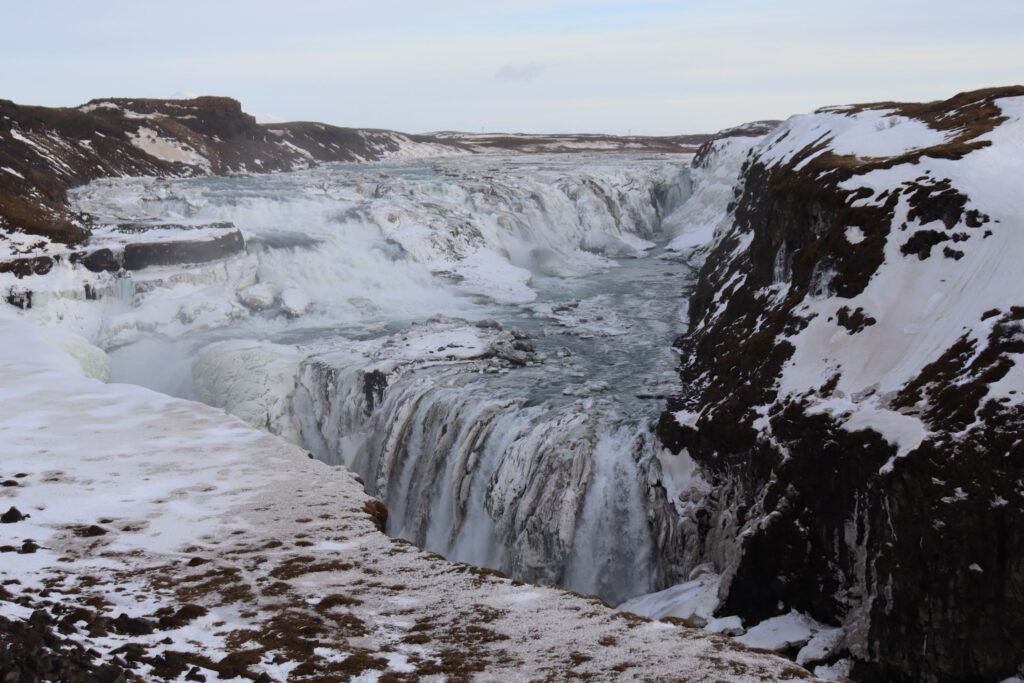
5. Meet Icelandic Horses
For me, one of the unexpected highlights of the Golden Circle in winter was meeting Iceland’s famous horses!
These small, stocky creatures aren’t ponies (all local Icelanders will tell you this – they’re very proud of their horses!) but a pure breed that’s been in Iceland for over a thousand years.
Icelandic Horses are known for their thick winter coats and gentle personalities, which makes them a true joy to meet!
We had a brief stop to meet some on our Golden Circle tour and they were so friendly, coming right up to the fence to say hello and get some fuss.
I spent the whole time with this one horse, making up for the fact that I was missing my own pets back home!
This was one of those little, unexpected moments during my time visiting the Golden Circle in winter that made my trip feel extra special and magical.
Katie’s Top Tip: Just remember that these horses belong to the local farmers, so avoid feeding them (unless you have the express permission of the farmer) as it can upset their stomachs.

6. Kerid Crater
Kerid Crater is often left out of the cheaper, big bus Golden Circle tours, but it is well worth visiting!
This volcanic crater lake is about 3,000 years old, with vivid red volcanic rock contrasting beautifully against the icy water below.
When I visited in winter, the crater was rimmed with snow, and the lake was completely frozen over, with the stark white ice in complete contrast with the red volcanic rocks!
The crater’s rim is also easy to walk around (I completed the full circle in ~30 minutes with loads of stops for photos and to admire the view).
Although keep in mind it can be slippy here in winter, so make sure you’re wearing proper boots and also crampons if it’s particularly icy.
Katie’s Top Tip: If you’re not taking the tour, keep in mind that there is a small entrance fee (about 400 ISK) that goes toward maintaining the paths. But with a tour, this will be included so you don’t have to think about it!

7. Blue Lagoon (Optional Stop)
Okay, so the Blue Lagoon isn’t technically part of the Golden Circle, but a lot of Golden Circle tours in winter (including this one that I took!) include it as the final stop.
And honestly, having experienced it myself, it’s hard to think of a better way to end the day!
I mean, you’ve just spent hours out in the cold, exploring icy waterfalls and snowy National Parks, and then you end the day sinking into warm, milky-blue geothermal water, surrounded by lava rocks…
Yes, please!
Sure, it’s more than a little touristy, but in my opinion, that’s for a good reason.
Visiting in the late afternoon in winter with our small group tour, I found the Blue Lagoon surprisingly peaceful (definitely not what I was expecting!)
On our tour, we were given around 2 hours to float in the lagoon, grab a free drink from the swim-up bar, and try the complimentary silica mud mask (yes, the hype is real, my skin felt amazing!)
Plus, I’d met a few lovely girls from earlier in the day and got to float in the lagoon with them, so I felt a lot less awkward as a solo female traveller.
For a full solo female traveller’s guide to the Blue Lagoon, check out my blog post: Iceland’s Blue Lagoon in Winter: What to Expect (and Pack!)
Katie’s Top Tip: Bring conditioner and leave it in when you enter the lagoon (also tie your hair up before entering), as the geothermal water will leave your hair feeling dry if you skip it.

How to Get to the Golden Circle from Reykjavik
Getting to the Golden Circle from Reykjavík is straightforward, whether you self-drive or take a guided tour.
If you’re confident driving in (sometimes extreme) winter weather conditions, hiring a car gives you the most freedom to explore at your own pace.
The loop is about 300km (or 186 miles), and roads are generally well-maintained in winter, although snow, wind and ice make conditions unpredictable.
Just make sure your car rental from Reykjavik includes winter tyres (ideally a 4×4) and check road.is before you travel, for live updates on conditions.
But if you’d rather not deal with icy roads or navigating solo (because same!), joining a small group Golden Circle tour from Reykjavik is an easy, stress-free alternative.
All tours cover the highlights of Thingvellir National Park, Strokkur, and Gullfoss, with extra stops like the Blue Lagoon, Secret Lagoon or Kerid Crater offered by some companies.
Plus, they’re great if you want to benefit from local insights and stories from your guide, or if you’re looking to meet fellow travellers (like I did at the Blue Lagoon!)
Katie’s Top Tip: If you’re visiting the Golden Circle without a car, I highly recommend choosing a small-group tour over a big bus one, for a more personal and relaxed experience. The tour I took was this Golden Circle, Kerid Crater & Blue Lagoon Minibus Tour, and I had the best time. I can’t recommend it enough!

Is the Golden Circle Crowded in Winter?
One of the biggest benefits of visiting the Golden Circle in winter is that it’s so much quieter than in summer.
Don’t get me wrong, you’ll still see tour buses at all of the main stops, but it’s nothing like the crowds you get in July or August.
During my trip in January, I had entire viewpoints at Thingvellir National Park to myself (like when I was watching the sunrise over the tectonic plates!) which is pretty much unheard of in peak season.
But just to prepare you, weekends and late mornings still get busy in winter, especially at Gullfoss and Strokkur, where most Golden Circle tours in winter overlap.
But overall, winter is 100% my favourite time for this Golden Circle route, as you get to see all of the highlights, with fewer crowds and a gorgeous backdrop of snow!
Katie’s Top Tip: If you want to combine two of Iceland’s winter highlights, pair the Golden Circle with a Northern Lights hunt that evening!

Visiting the Golden Circle in Winter
Visiting the Golden Circle in winter isn’t guaranteed to be that dreamy, Instagrammable experience you’ve seen all over the internet.
You need to know that it’s cold, wind chill can be brutal, daylight hours are short, and paths are more likely than not going to be very icy.
But that’s exactly what makes it so magical.
The Golden Circle in winter feels wild and beautiful in a way the internet can’t do justice to until you’ve stood there yourself, crunching through the snow to a frozen waterfall or watching the sunrise over the tectonic plates.
This loop is Iceland’s most popular route for a very good reason.
And personally, I loved visiting the Golden Circle in January! It felt calmer, the crowds were smaller, and the landscape looked like a snow globe!
Katie’s Top Tip: Just don’t expect perfect conditions and you’ll have the most magical time!
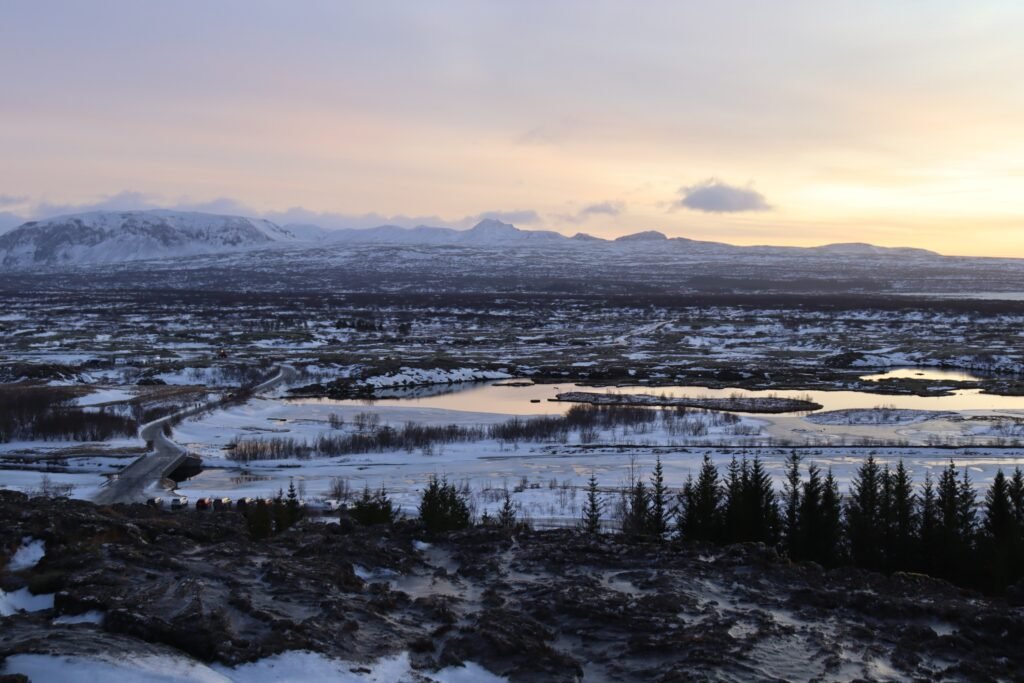
Combining the Golden Circle with Other Iceland Attractions
If you’ve got extra time in your Iceland itinerary, combining the Golden Circle with another experience is the best way to make your winter trip even more memorable!
And a lot of Golden Circle tours in winter offer combo options that pack in even more of Iceland’s greatest hits:
Golden Circle + Blue Lagoon (1 Day)
This combo is the tour I took in January, with a full day of sightseeing, followed by a few hours relaxing in the steaming Blue Lagoon!
With this tour, you’ll explore Thingvellir National Park, Strokkur Geyser, Gullfoss Falls and Kerid Crater during the morning and early afternoon, then unwind in the Blue Lagoon before heading back to Reykjavik.
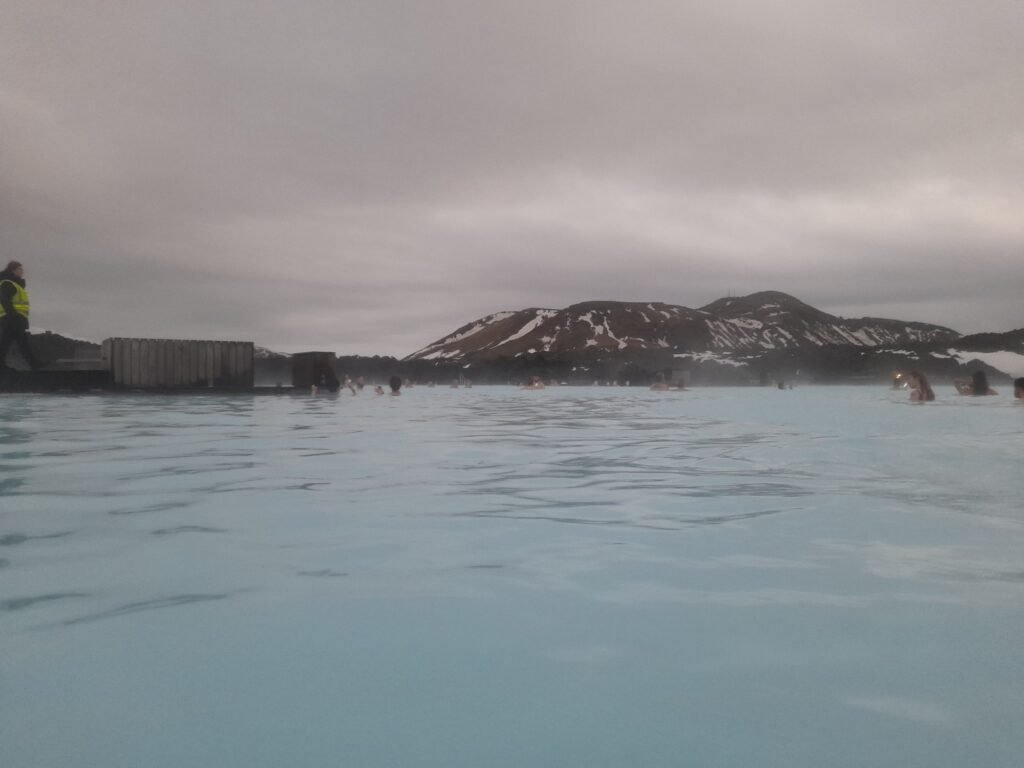
Golden Circle + Northern Lights
This one’s a favourite for winter travellers. During the day, you’ll see all of Iceland’s most famous Golden Circle stops (Thingvellir, Strokkur, Gullfoss Falls, Kerid Crater), and then by night, you’ll chase the aurora with an experienced guide!
Golden Circle, South Coast + Ice Cave Visit (3 Days)
If you’ve got a few days to spare, this combo is a dream!
You’ll start with the highlights of the Golden Circle, then head further south to see Seljalandsfoss and Skógafoss waterfalls, Reynisfjara’s black sand beach, walk along the iconic Sólheimajökull Glacier, and see the incredible Jökulsárlón Glacier Lagoon and Diamond beach!
Plus, have the experience of a lifetime when you explore the breathtaking Blue Ice Cave, underneath the largest glacier in Europe: Vatnajökull!
It’s Iceland’s prettiest spots and most unforgettable travel experiences in just three days!
Plus, accommodation is included, so there are less logistics to think about and more time to just relax and enjoy!
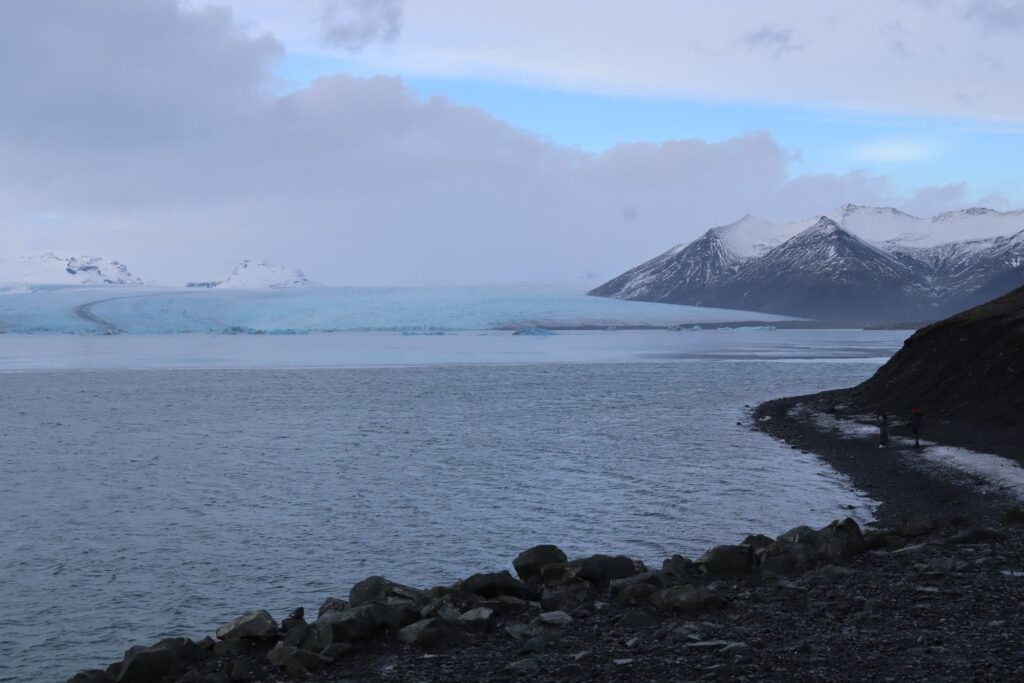
The Golden Circle as Part of a 6 Day Trip Around Iceland
If you really want to see the best of Iceland’s famous ring road in winter, without stressing over icy roads or unpredictable weather, join this organised 6-day tour!
This small group itinerary includes the highlights of the Golden Circle as the perfect introduction to Iceland, where you’ll visit Thingvellir, Strokkur, and Gullfoss with your local guide.
Then from there, you’ll continue towards the South Coast, exploring the mighty Seljalandsfoss and Skógafoss Falls, Reynisfjara’s famous black sand beach, and see the incredible Jökulsárlón Glacier Lagoon and Diamond beach!
Next, tour a dramatic ice cave under the largest glacier in Europe: Vatnajökull!
Then you continue on to the underrated East Fjords, Lake Mývatn and more, before arriving in Akureyri in the north to chase the Northern Lights!
This 6-day, small-group Iceland Ring Road tour truly is the best way to see Iceland’s highlights and hidden gems in winter!
Or, if you want to see even more of Iceland’s highlights, this 8-day, small-group Iceland Ring Road tour also includes whale watching and the breathtaking Snaefellsnes Peninsula!
Plus, accommodation is included with both tours, so there are fewer logistics to think about and more time to just relax and enjoy the once-in-a-lifetime experience!

Katie’s Top Tip: You’ll know by now that I highly recommend booking small group tours for everything in Iceland. So if you want to see all of the tours I personally took and recommend, take a look at my blog post all about the 7 best day trips from Reykjavik!
Final Thoughts
The Golden Circle is absolutely worth visiting in winter, but not because it’s an easy trip or perfect. (In winter, nothing in Iceland is 100% guaranteed to go smoothly!)
But the Golden Circle in winter is still worth visiting because it gives you Iceland at its most beautiful and most authentic.
You’ll see a powerful geyser erupting into the cold air, a partially frozen waterfall thundering into a deep canyon, and snow-dusted lava fields that look like something out of a snow globe.
And for solo female travellers, this iconic Golden Circle route is one of the safest and most accessible ways to experience Iceland’s magic – without having to drive yourself in icy conditions.
Especially standing in the rift valley between tectonic plates in Thingvellir National Park, it makes you feel tiny in the best possible way!
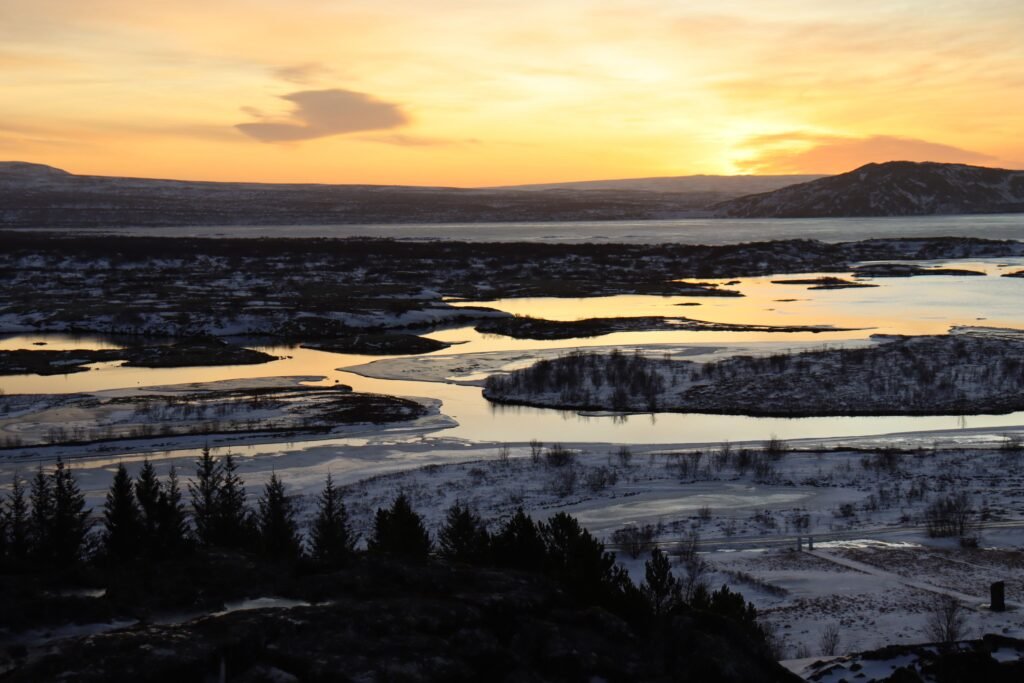
Golden Circle in Iceland: FAQs
How long do you need to see the Golden Circle in winter?
Most Golden Circle tours in winter take around 7–9 hours, depending on whether they just take you to the classic stops (Thingvellir, Strokkur Geyser and Gullfoss Falls), or whether they include additional stops (Kerid Crater, Blue Lagoon, meeting Icelandic Horses).
It’s definitely doable (and very popular!) as a full-day trip from Reykjavik, but many tourists combine it with the South Coast over a few days or as part of a full, small-group Ring Road tour that typically lasts for 6 days in Iceland, or 8 days in Iceland.
What should I wear to the Golden Circle in winter?
Think layers! Iceland’s winter weather often swings from mild to drizzly to snowy to windy – all in one day.
So at a minimum, you’ll need thermal base layers, waterproof outer layers, insulated boots with good grip, gloves, and a warm hat that covers your ears.
I also highly recommend you pack slip-on crampons, especially for stops like the Strokkur Geyser, which was incredibly icy. Some tour companies provide them, but I always bring my own just in case.
Can I visit the Golden Circle without a car in winter?
Yes! If you don’t want to drive, there are plenty of Golden Circle tours in winter that leave from central Reykjavik. These vary from budget big bus trips to small group adventures.
I would always recommend you go for a small group option as it gives you a more personal and relaxed experience.
This is the small group tour I booked to see the Golden Circle in January. It took me to Thingvellir National Park, Strokkur Geyser, the wider geothermal area, Gullfoss Falls, Kerid Crater, meeting Icelandic Horses, and finished with a relaxing soak in the Blue Lagoon!
Are the roads on the Golden Circle safe in winter?
The main Golden Circle route is used a lot by self-driving tourists, tour buses and locals (even in winter), so is usually well-maintained.
But icy patches (even dangerous black ice), and sudden snowstorms are common in Iceland in winter.
So if you’re not used to driving in these conditions, it’s safer (and also more relaxing!) to join a small group guided tour.
Can I see the Northern Lights on a Golden Circle tour?
Not during the day, but this combo tour pairs the Golden Circle with an evening Northern Lights hunt (with an extended break for dinner in between, so you’re not constantly on the move and exhausting yourself!)
If you want to book your Northern Lights experience separately, always choose a company that offers free rebookings if you don’t see the lights on your first try.
I recommend this small group Northern Lights tour from Reykjavik!
How cold does it get at the Golden Circle in winter?
Temperatures typically range from -1°C to 4°C in the winter, but as I said earlier, the biting wind chill will often make it feel a lot colder.
Dress warm in layers, bring rechargeable hand warmers (they’re eco-friendly and will be your best friend in Iceland in winter!), and also keep snacks handy, as you use more energy when it’s cold.
Read More About Travel in Iceland:
- The Ultimate Iceland Solo Female Travel Guide (For 2025!)
- Iceland’s Snaefellsnes Peninsula in Winter (Without a Car!)
- How to Visit Iceland’s South Coast in Winter (Without a Car)
- 7 Unmissable Day Trips From Reykjavik in Winter (No Car!)
- How to See Iceland’s Golden Circle in Winter (Without a Car)
- Iceland’s Blue Lagoon in Winter: What to Expect (and Pack!)
- 15 Iceland Travel Tips for Winter You’ll Be Glad You Know
- How Many Days Do You Need in Iceland in Winter?
- How to Spend 5 Days in Iceland in Winter (Without A Car!)
- 19 Prettiest Places in Iceland Every Traveller Must See
- Is Iceland Worth Visiting in Winter? What You Must Know
- Is Iceland Safe For Solo Female Travellers? An Honest Guide

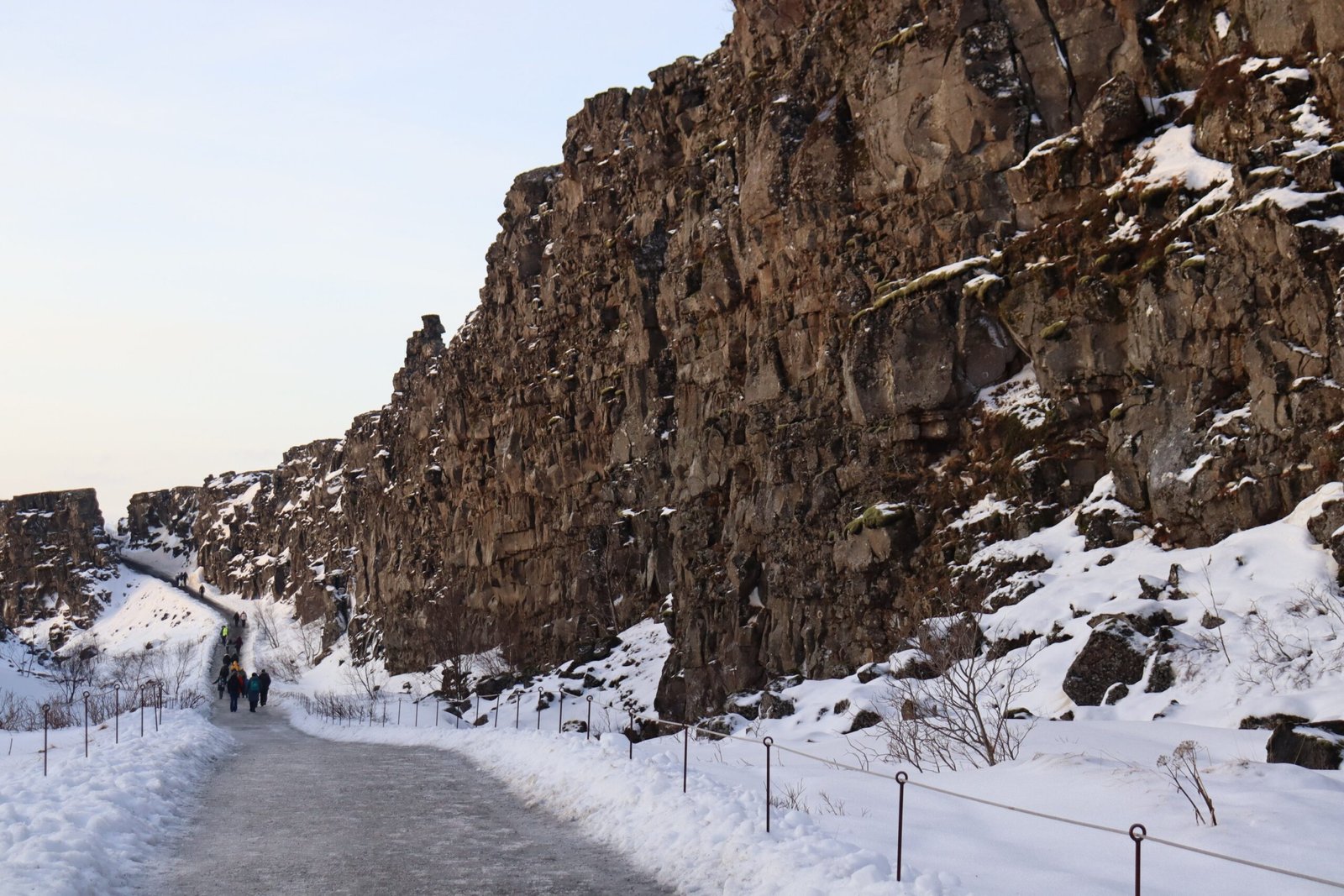
2 Comments